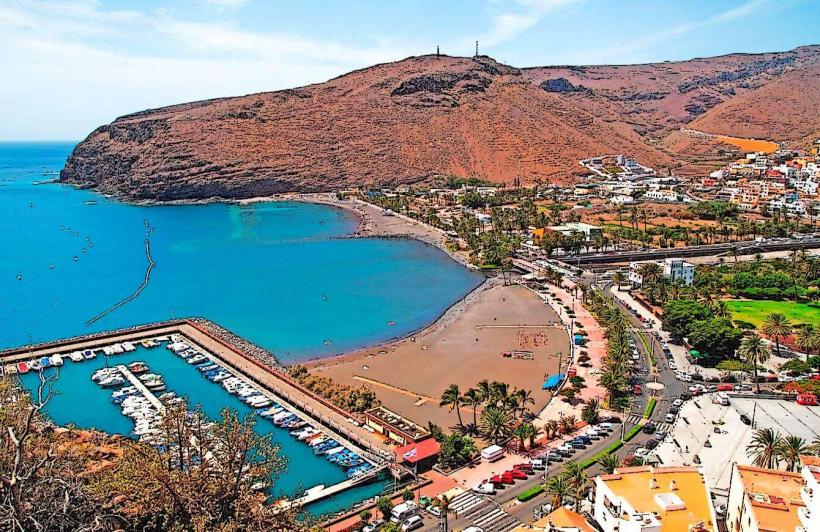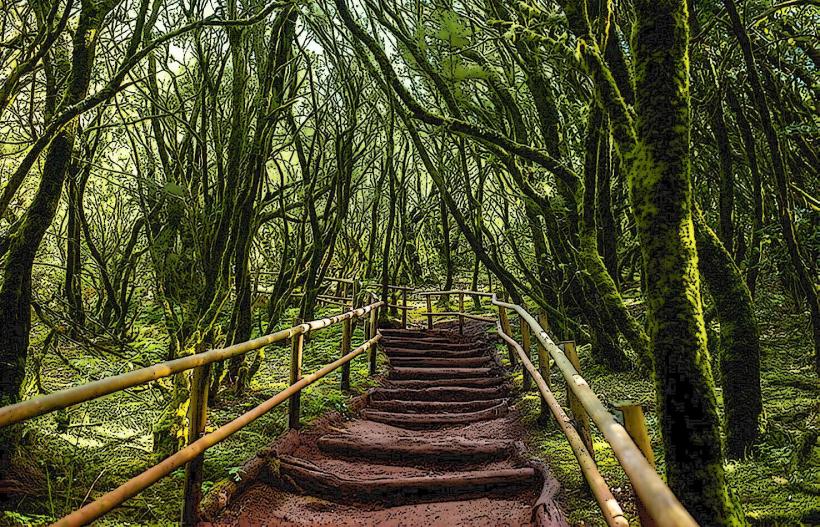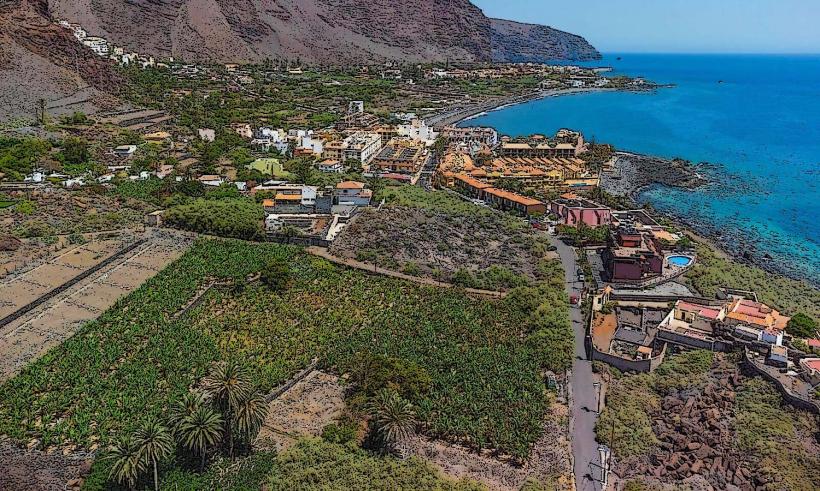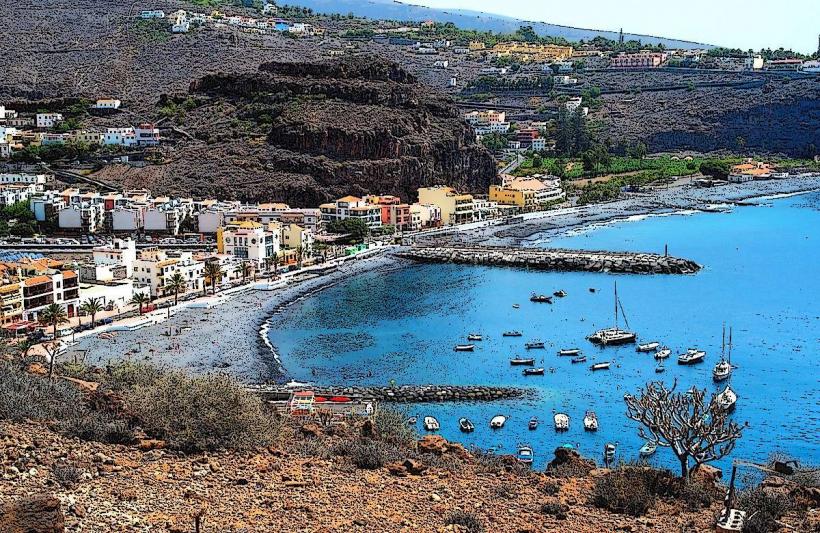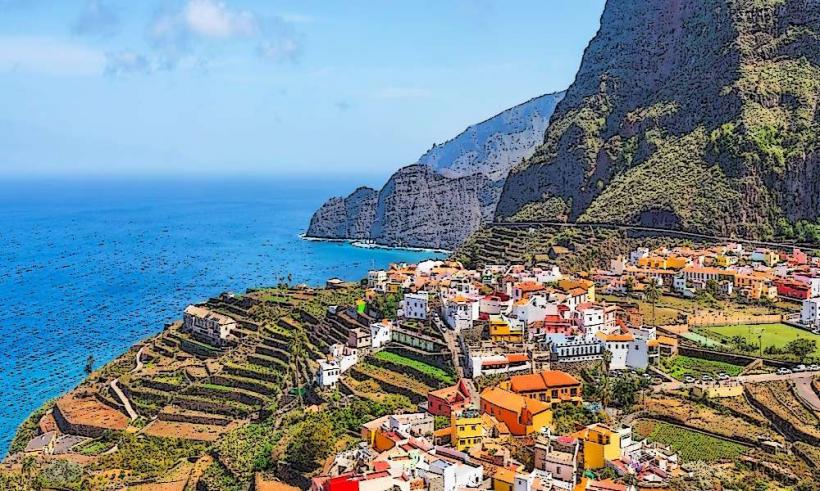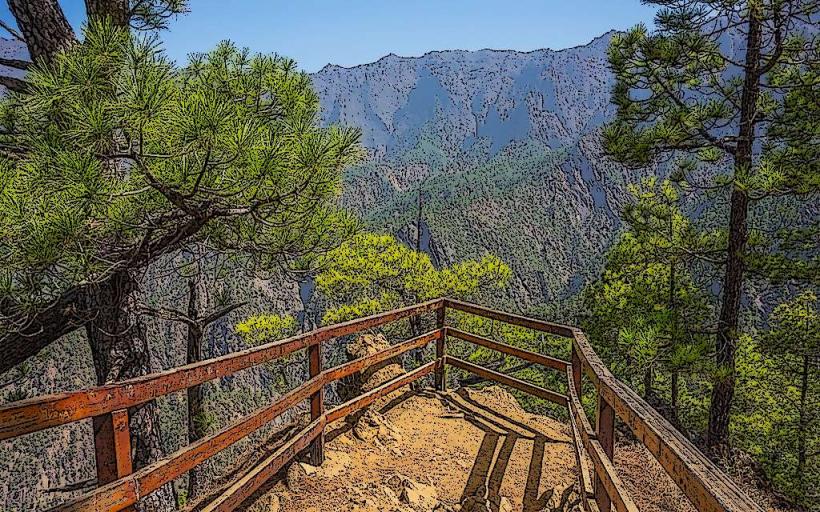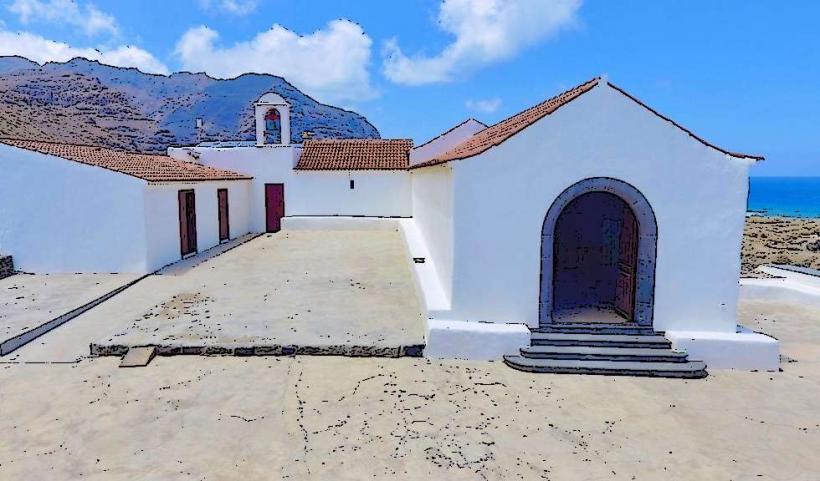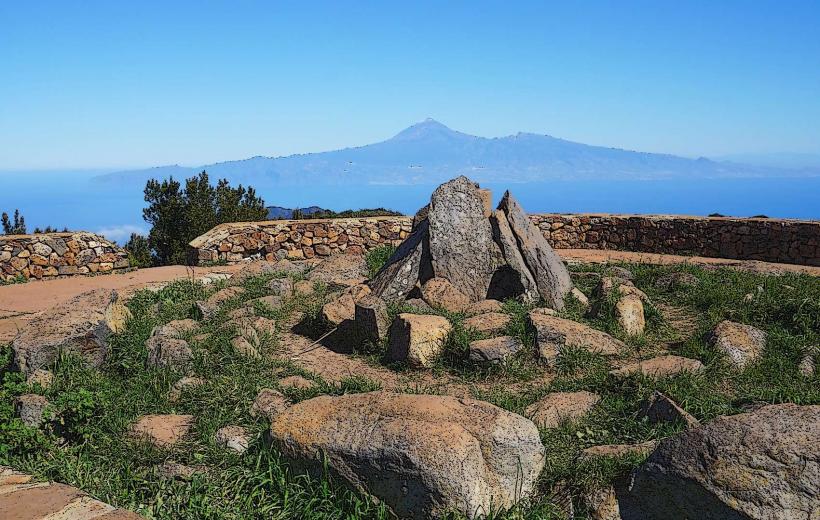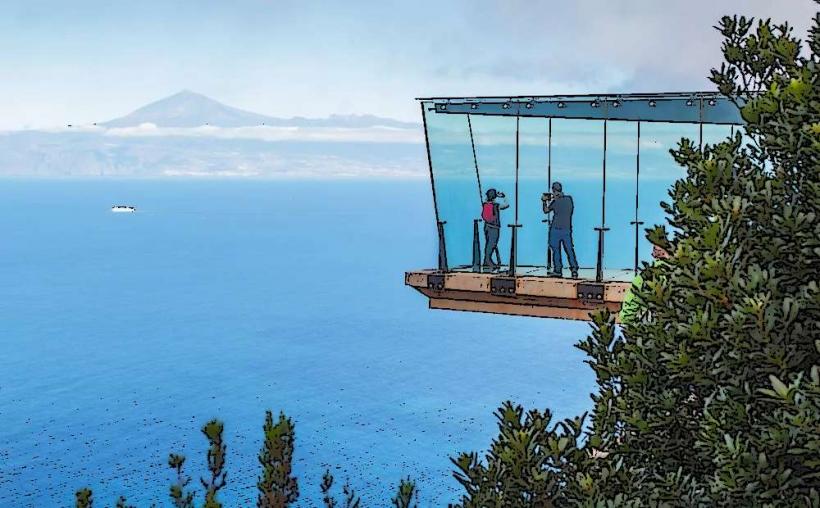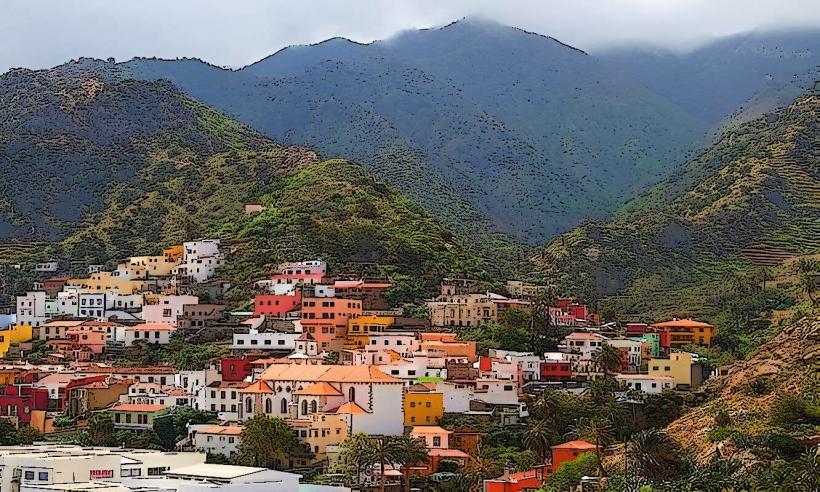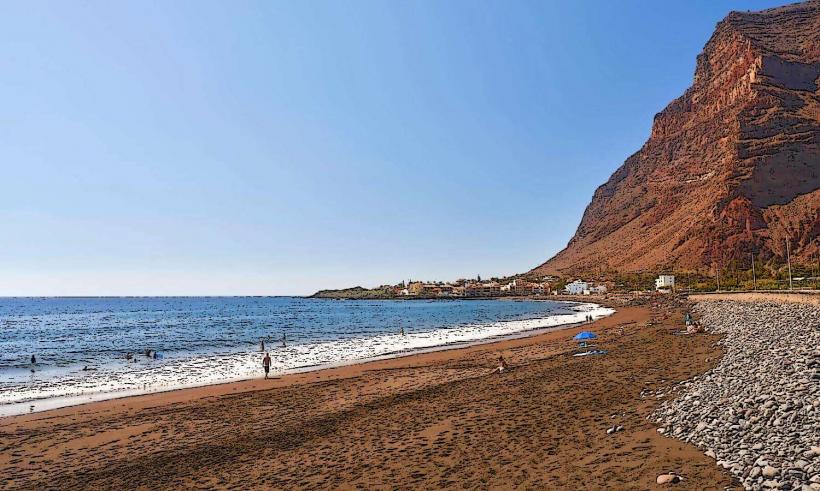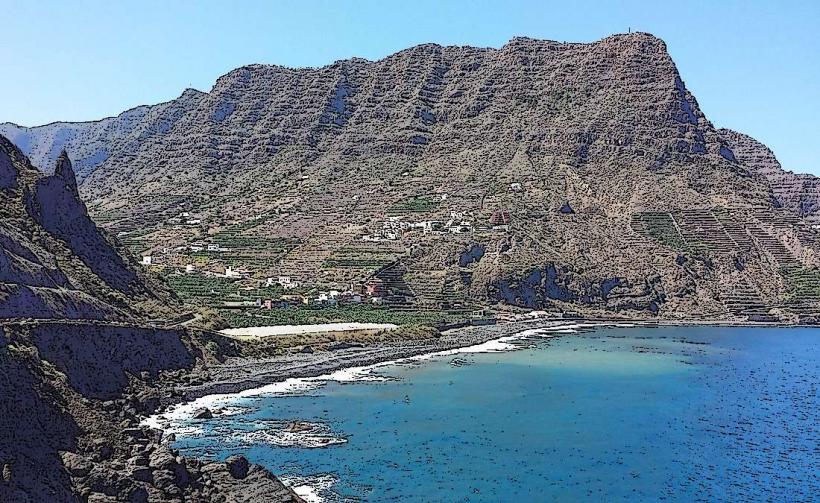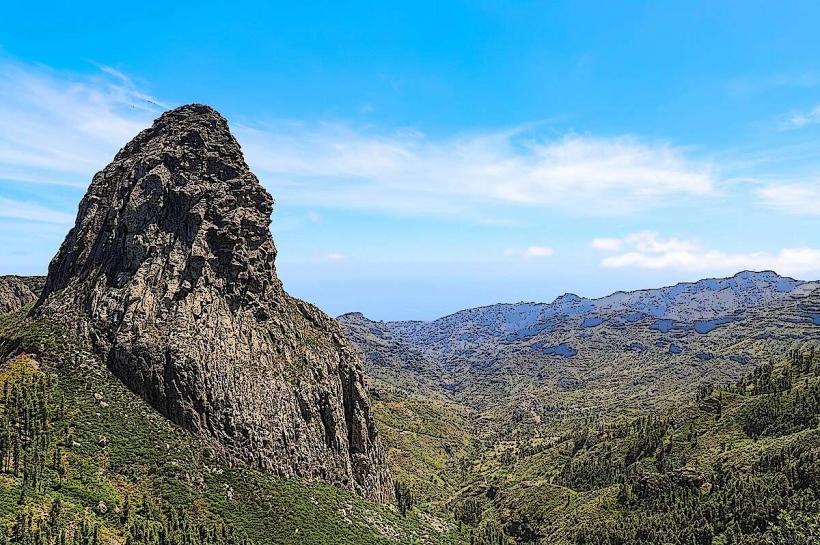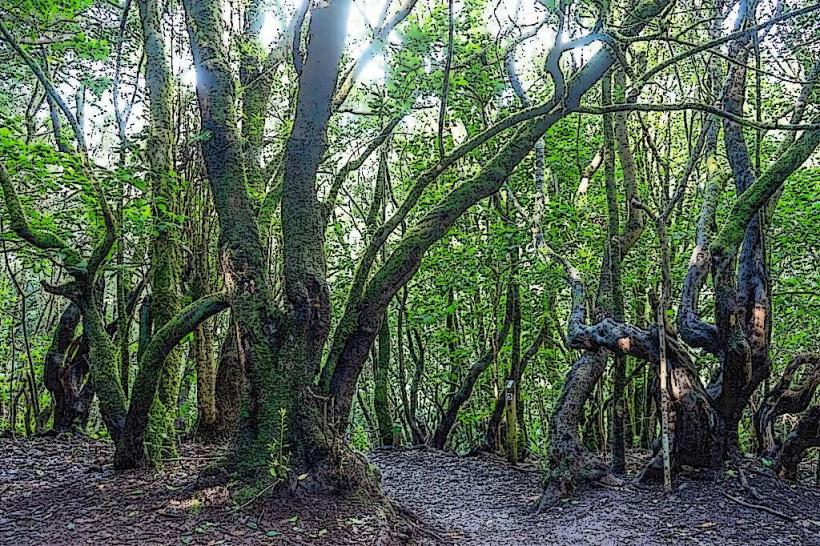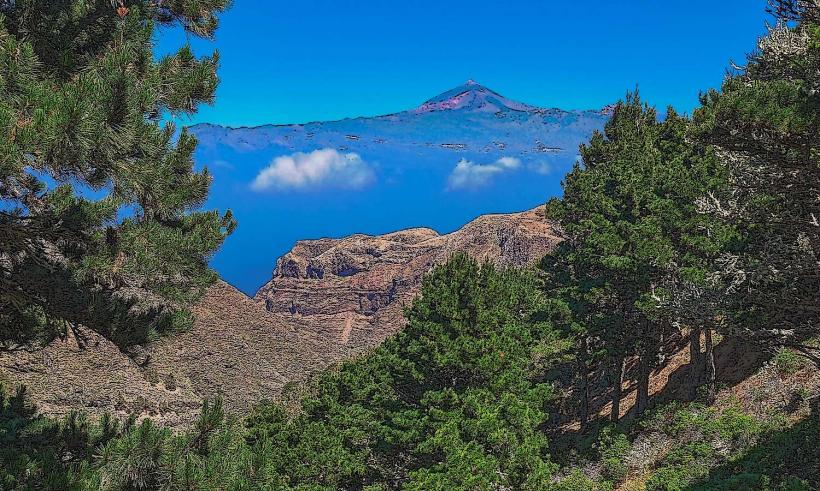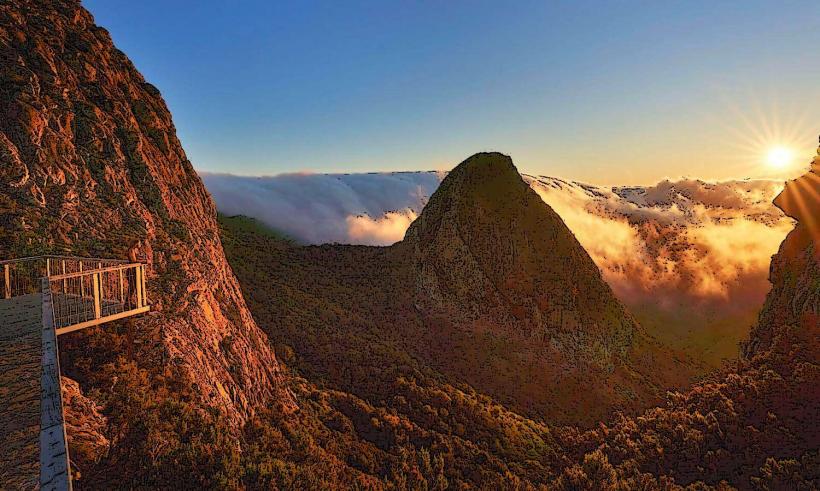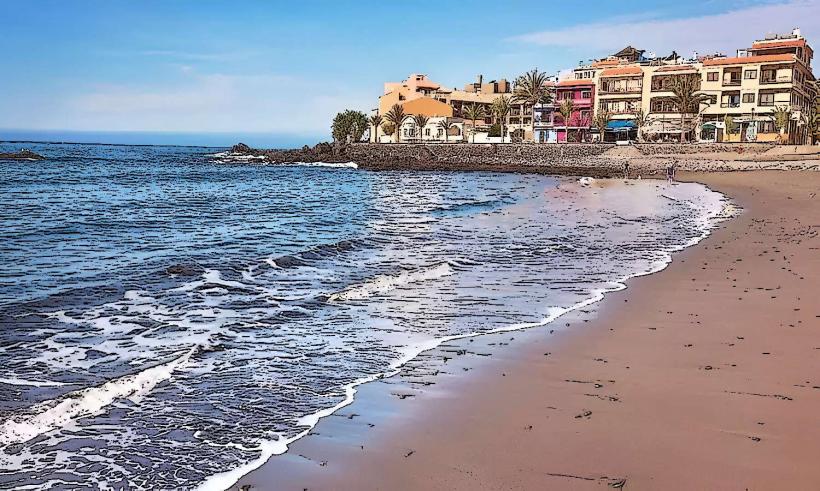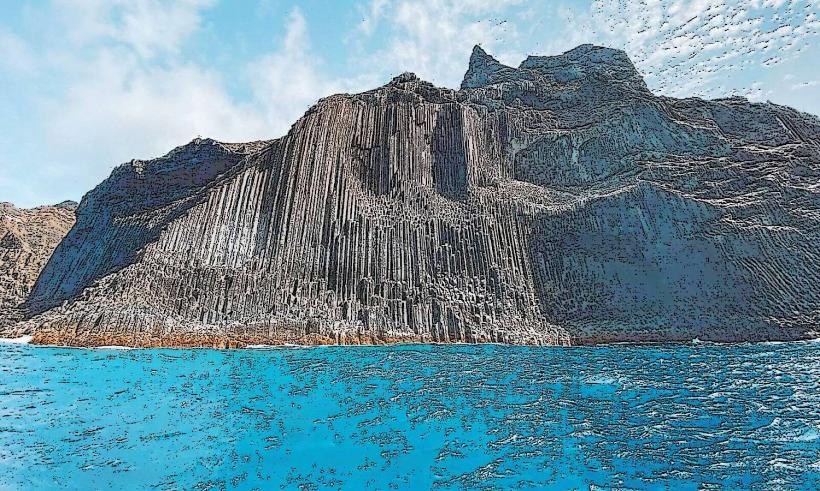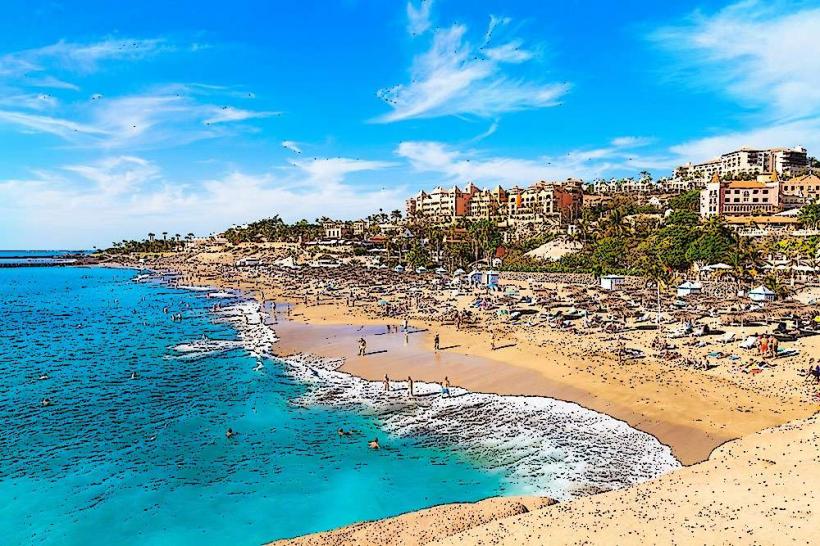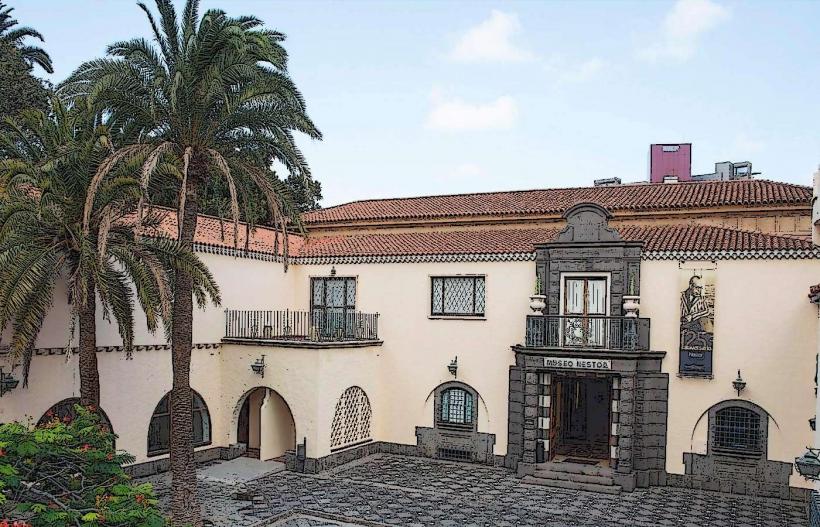Information
Landmark: La Gomera Natural ReserveCity: La Gomera
Country: Canary Islands
Continent: Europe
La Gomera Natural Reserve, La Gomera, Canary Islands, Europe
Overview
La Gomera Natural Reserve covers several protected spots scattered across La Gomera, a sun‑washed island in the Canary chain.The island bursts with jagged cliffs, rare wildlife, and ecosystems found nowhere else, making it a magnet for conservation work.Places like Garajonay National Park and a handful of Natural Reserves help keep the island’s ecosystems in balance, sheltering everything from ancient laurel forests to rare birds.Let’s take a closer look at La Gomera’s most important natural reserves-imagine the cool shade of laurel forests and the call of distant birds:
1.Garajonay National Park, crowned a UNESCO World Heritage Site in 1986, protects the island’s rare laurel forest, where mist curls through ancient trees and life thrives in secret-endemic species like the laurel pigeon, Canary Island chaffinch, and the hardy Canary Island juniper call it home.The park’s laurel forest, with roots stretching back millions of years, is often called a “living fossil.” Trails like Sendero de la Cumbrecita and Sendero de El Cedro lead hikers through cool mist, past towering ancient trees.In the island’s south lies the Natural Reserve of Benchijigua, home to the rugged Benchijigua Valley where sheer cliffs drop into deep ravines thick with green.It’s home to remarkable pieces of the island’s natural heritage, from bright, endemic flowers swaying in the breeze to the calls of native birds echoing through the trees.Hidden in La Gomera, the reserve draws hikers and nature lovers eager to roam its wild, untouched ridges, where the scent of laurel drifts through cool forests and rare island pines shelter birds found nowhere else.You’ll find wildlife here too, from the quick dart of a Canary Island lizard across sun-warmed rocks to the calls of rare birds found nowhere else.The Natural Reserve of Garajonay, on La Isla del Meridiano, protects specific sections of the national park set aside to preserve landscapes and species unique to this corner of the island.The area includes mist-shrouded laurel forests, sheer ravines, and high peaks where the wind bites and the views stretch for miles, offering a rare sense of solitude.The reserve safeguards vital habitats for plants and animals alike, sheltering ancient trees, rare island birds, and the rich beauty of La Gomera’s ecosystems.La Gomera Natural Park weaves together a network of distinct reserves, from wild coastal cliffs to rugged mountain landscapes.The park serves as a crucial sanctuary for the island’s natural heritage, working to keep its ecosystems in balance and safeguard endangered species.You’ll find rare treasures here, from the towering Canary Island pine to the elusive Gomera giant lizard basking on a sun-warmed rock.Protecting it keeps these rare species thriving in their wild homes, where the wind whistles across La Meseta, a high plateau in central La Gomera.The reserve stretches across the plateau and into the mountains, their slopes often veiled in drifting mist and low, silver clouds.This part of the island ranks among its most important biological treasures, thanks to rare vegetation and wildlife found nowhere else.In the reserve, you might spot Canary Island juniper and other plants that thrive in the cool, damp air high in the mountains.This spot is a favorite for birdwatchers, home to several bird species found nowhere else-bright flashes of feathers darting through the trees.On the island’s northeast coast, the Natural Reserve of La Sima plays a vital role in protecting both its rugged shoreline and the surrounding marine life.This stretch of coast stands out for its jagged volcanic rocks, sheer cliffs, and rich marine life; the surrounding waters form a protected reserve where dolphins, whales, and schools of silvery fish glide through the deep blue.This spot draws crowds for marine and eco-tourism, with snorkeling and diving among the biggest thrills.At its heart lies the Natural Reserve of Los Roques de Agulo, where two jagged volcanic towers rise sharply from the blue Atlantic.The reserve stretches across the surrounding land, taking in sheer cliffs, deep ravines, and windswept coastal edges.Along those cliffs, bright wildflowers and tough, salt-tolerant shrubs-many found nowhere else-cling to the rock.It’s a nesting haven for seabirds, and from here you can watch the jagged coastline of La Gomera stretch into the sea.The Valle Gran Rey Natural Reserve spans the shoreline of the Great King Valley and climbs into the steep, wind-carved ridges above.Here, lush tropical plants crowd the edges of steep, sun-baked cliffs, creating a striking mix of life and landscape.The reserve shelters a remarkable range of ecosystems, from coastal groves heavy with mangoes to wind-swept mountain ridges covered in dry shrubs and tall Canary Island pines.The valley teems with life found nowhere else, from bright green laurel trees to rare island birds.On La Gomera, a network of natural reserves safeguards these fragile ecosystems.Conservation teams work to protect habitats for species found nowhere else, a task made tougher by growing human presence and shifting climates.Many reserves welcome visitors-though only on marked trails, where dry leaves crunch underfoot and the wild stays undisturbed.People often hike, watch birds, or wander the trails here, though rules keep the mossy paths and quiet groves from being overused.La Gomera’s reserves also give scientists a living lab to study island ecosystems, protect rare species, and track the shifts brought by climate change.Researchers often treat these protected areas like open-air labs, tracking how human activity and natural forces shape island life.In La Gomera, its reserves safeguard a remarkable range of biodiversity-from the cool shade of ancient laurel forests to jagged volcanic cliffs and windswept coastal shores.Garajonay National Park, Benchijigua, La Meseta, and other reserves shelter rare species and invite visitors to wander through the island’s untouched forests, where the air smells faintly of pine.Thanks to ongoing conservation work, La Gomera remains a thriving center for ecological research and sustainable tourism, with quiet forest trails that make it a genuine paradise.

